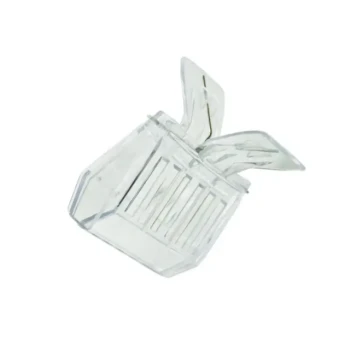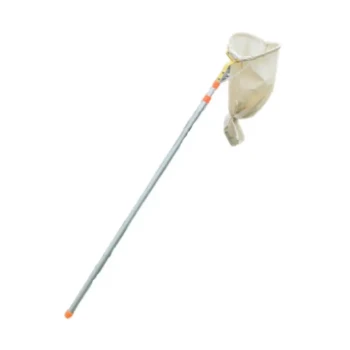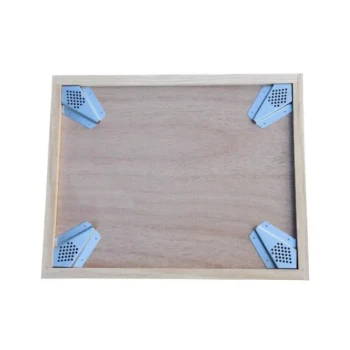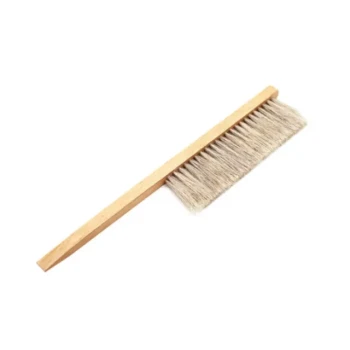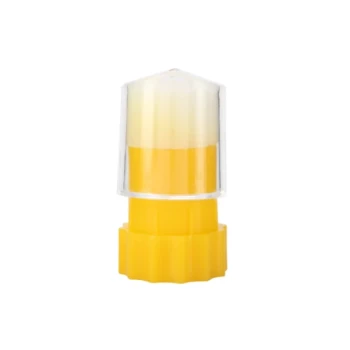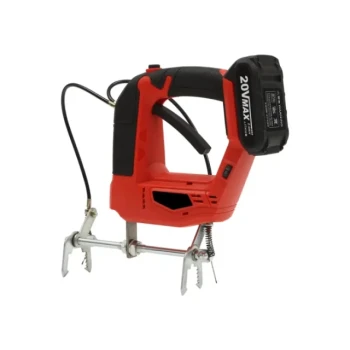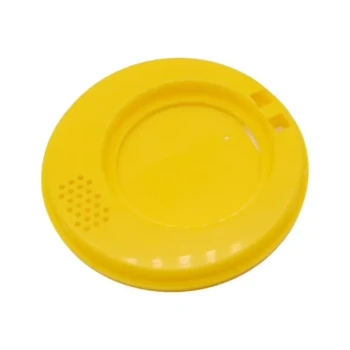Yes, you should always wear socks with beekeeping shoes. They serve as a critical secondary barrier against stings and are essential for creating a proper seal between your boot and your bee suit. The ideal socks are light-colored and long enough to extend well up your calf, allowing the elastic ankle of your suit to close securely over them.
The core principle of beekeeping attire is to create a sealed system with no entry points for bees. Socks are not just an accessory; they are a fundamental component for sealing the vulnerable gap at your ankles, one of the most common places for bees to enter.
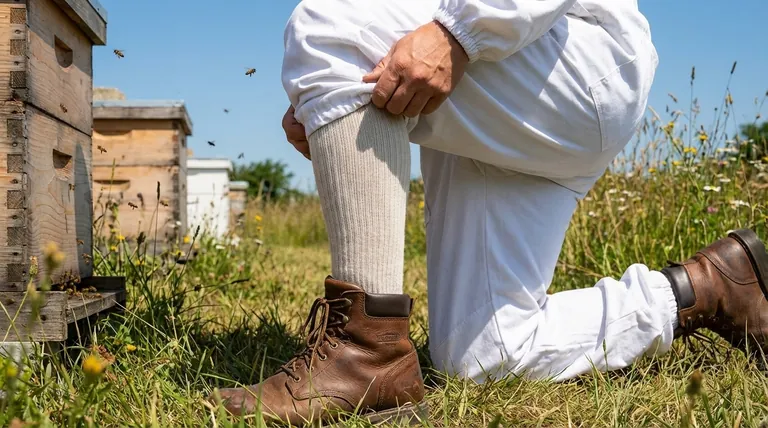
The 'Sealed System' Principle
Your beekeeping suit, gloves, and veil are designed to create an unbroken barrier. However, this system is only as strong as its weakest points, which are invariably the transition areas: the wrists, the neck, and especially the ankles.
Why Ankles Are a Primary Target
Bees that are knocked off the hive or are guarding the entrance often end up on the ground. From there, their instinct is to crawl upwards.
Any small gap between your pant leg and your boot is a direct invitation for them to enter your suit, which can lead to multiple stings in a difficult-to-reach area.
The Sock as a Second Line of Defense
Properly chosen socks play two key roles in sealing this gap. First, they provide an additional physical layer that a bee’s stinger must penetrate.
Second, and more importantly, they create a smooth, sealed surface for the elastic cuff of your bee suit to grip, preventing bees from crawling underneath it.
What Makes a Good Beekeeping Sock
The best socks for beekeeping are light in color, as bees can perceive dark, fuzzy materials as a threat, similar to a predator's fur.
They must also be long enough to pull up to your mid-calf. This ensures there is plenty of material to create a secure overlap with your suit.
Integrating Gear for Maximum Protection
Socks do not work in isolation. Their effectiveness depends entirely on how they are layered with your boots and bee suit.
The Correct Layering Order
The proper sequence is critical for creating a bee-proof seal. First, put on your socks and your boots.
Then, pull the pant leg of your bee suit down over the top of your boots. The elastic cuff at the bottom of the pant leg should sit snugly over the sock and the top of the boot.
Why Your Shoe Choice Still Matters
Socks are a backup, not a replacement for appropriate footwear. You must wear closed-toe shoes or boots that provide structural protection.
Never wear shoes with holes or mesh, such as clogs (Crocs) or running shoes, as these offer a direct path for a bee's stinger, rendering your socks useless as the primary barrier.
Common Pitfalls to Avoid
Even with the right gear, simple mistakes can compromise your safety. Understanding these common errors is key to a sting-free experience.
The Myth of Tucking Pants Into Boots
A frequent mistake among new beekeepers is tucking their suit's pant legs inside their boots. This creates a "funnel" that can guide bees directly into your footwear. Always ensure the pant leg goes over the boot.
Clothing That is Too Tight or Too Loose
Your bee suit should be loose enough that a bee’s stinger cannot reach your skin if it tries to sting through the fabric.
However, if the elastic cuffs at the ankles are too loose, they won't form a proper seal over your socks. Always check that these are snug but not uncomfortably tight.
Making the Right Choice for Your Safety
Your goal is to eliminate any potential entry points. The sock-and-boot combination is your foundation for achieving this at ground level.
- If your primary focus is maximum security: Choose thick, light-colored socks that go high up the calf, and pair them with over-the-ankle boots to ensure a significant overlap with your suit's pant leg.
- If your primary focus is comfort in hot weather: Opt for breathable, light-colored socks made from natural fibers, but never compromise on length. The integrity of the seal is more important than the material's thickness.
- If you are working with a particularly defensive hive: Double-check the seal at your ankles before every inspection. Ensure the suit's elastic is snug over your socks and that the pant leg fully covers the top of your boot.
Building a reliable, sealed system with your gear, starting from the ground up, is the foundation for a safe and confident beekeeping experience.
Summary Table:
| Aspect | Key Takeaway |
|---|---|
| Primary Function | Creates a sealed barrier at the ankles, a common entry point for bees. |
| Ideal Sock Type | Light-colored, long enough to extend to the mid-calf. |
| Layering Order | Sock > Boot > Bee suit pant leg pulled over the boot. |
| Common Mistake | Tucking the pant leg into the boot, creating a funnel for bees. |
Equip yourself with confidence. HONESTBEE supplies commercial apiaries and distributors with the high-quality beekeeping supplies and equipment needed for maximum safety and efficiency. Ensure every part of your gear, from your socks to your suit, works together seamlessly. Contact our experts today to discuss your wholesale needs and build a safer beekeeping operation.
Visual Guide
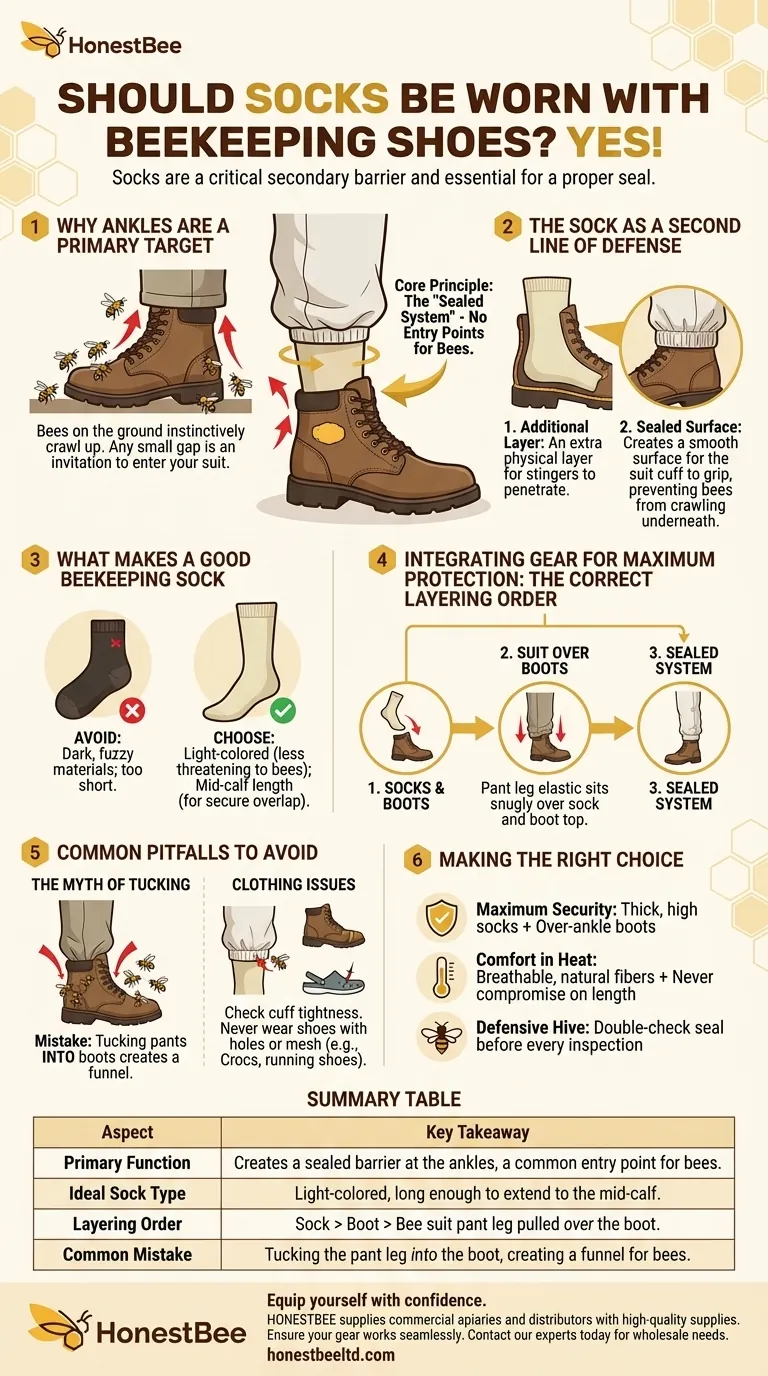
Related Products
- Cotton Beekeeping Suit and Round Hat with Veil Bee Keeper Protective Gear
- Professional Beekeeping Suit for Kids and Girls Childrens Bee Keeper Suit
- White Beekeeping Protective Suit and Hat with Fencing Veil for Beekeepers
- Beekeeper Cowboy Hat and Veil for Beekeeping
- High Performance Plastic Queen Excluder for Beekeeping and Apiary Management
People Also Ask
- Why is white the predominant color in bee suit designs? | Key to Hive Calm & Beekeeper Safety
- What are the benefits of a fully ventilated beekeeping suit? Stay Cool and Protected in Hot Climates
- How should a beekeeping suit be hung to maintain its shape? Protect Your Investment with Proper Storage
- Why is a jacket with a hat veil recommended for beekeepers? Essential Protection for Your Face and Neck
- What factors should be considered when choosing a beekeeping suit? Balance Safety, Comfort & Performance








